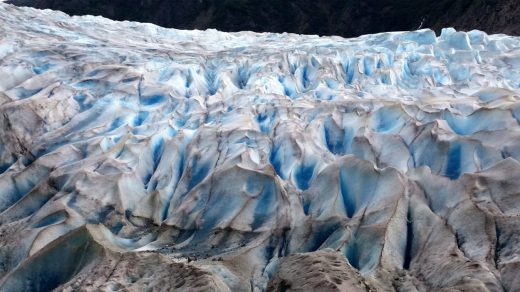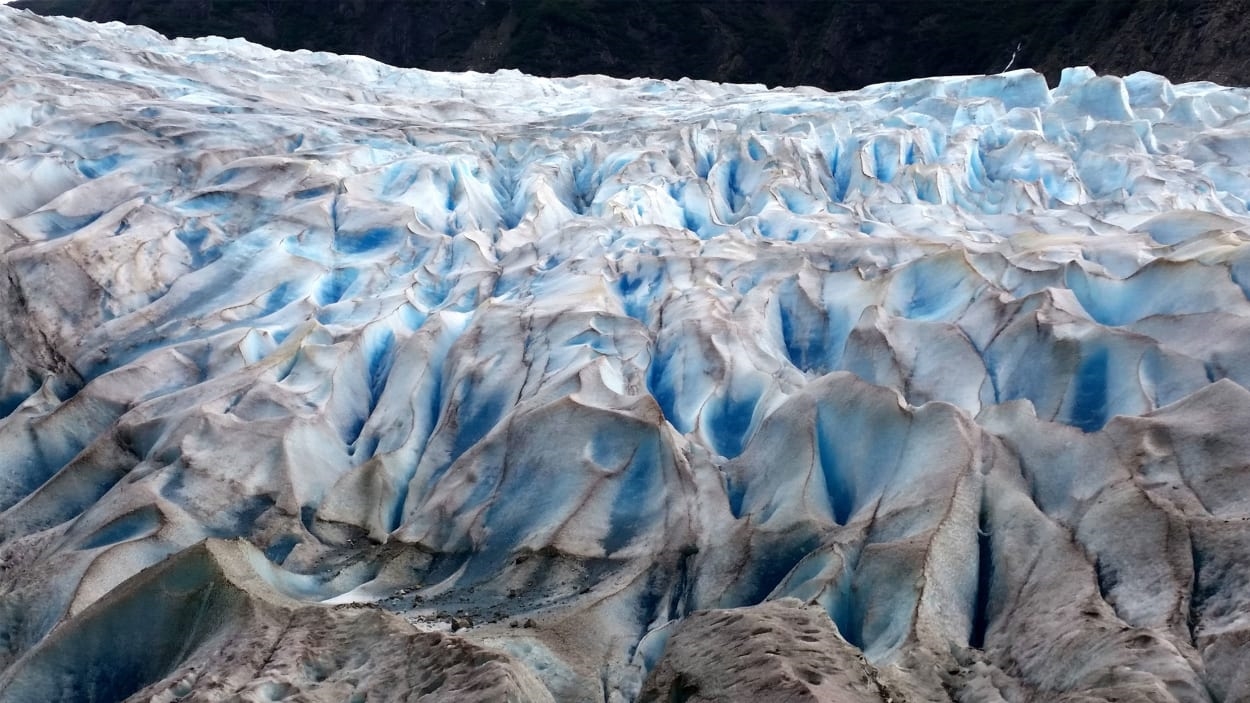Alaska’s glacier outburst and devastating floods deserve more media attention
Over the weekend, one of Alaska’s most famous glaciers melted enough to inundate the state’s capital, Juneau, with a record amount of floodwater, taking with it entire homes and forcing city officials to declare a state of emergency and evacuate residents.
Videos of the havoc being wreaked on the city started going viral on Sunday. One shows a large two-story home collapsing into the fast-moving waters. In another, trees are sucked in as the riverbank erodes.
The cause was water from the 1,800-foot-deep, half-mile-wide Mendenhall Glacier, a major tourist draw located within eyeshot of downtown Juneau. The glacier’s so-called Suicide Basin has been a source of flooding in fits and bursts since 2011, but this weekend’s overflow demolished old records—the lake crested at 15 feet; the previous record was 12 feet, set in 2016. The National Weather Service warned areas that have never flooded were beginning to receive water.
The glacier’s retreat is an example of bigger climate-related problems for the 1,500-square-mile Juneau Icefield, the continent’s fifth largest. Mendenhall Glacier is believed to be shrinking by as much as 150 feet per year. It may not be visible at all from the Mendenhall Glacier Visitor Center by 2050—a problem for Juneau’s sizable tourism industry that relies on the glacier. The U.S. Forest Service warns visitors who’d hoped to explore its ice caves that “the cave that appears in many recent internet photos has collapsed and disappeared,” and glaciologists expect the glacier may very soon melt to a point where its “terminus,” seen below in the lefthand photo, no longer touches Mendenhall Lake:
What causes “glacial outburst” flooding is when a glacier has already melted enough to form a lake in a depression, then either it melts some more or the surrounding ice gives way and the lake’s water level spills over, creating what scientists dub an “inland tsunami.” Such floods are normal weather events historically, but it’s rare for them to cause massive damage, particularly in a coastal Alaskan city. A hydrologist working in the National Weather Service’s Juneau office told ABC News the chances that Mendenhall Glacier would flood like this were less than 1%. “We didn’t even think that this was possible,” he said.
The Weather Service has actually been recording glacial-outburst flood data since the 1960s. The agency tracks 22 glacier-damned lakes in the region, from Summit Lake at the Canadian border in the southeast to Strandline Lake in the Tordrillo Mountains farther west. All of them have had “releases” during the last six decades—in some cases, dozens—but typical notes read “No impacts reported” or “Not a huge flood by historic standards.”
It can be challenging nowadays to know about all of the looming climate threats—or even when the disasters are actually occurring. Right now, it isn’t just glaciers melting in Alaska: The Southwest spent weeks in the midst of a record heat wave, and the Gulf Coast is experiencing a sea-level rise that wasn’t expected until later this century. (It is putting New Orleans, America’s best-known city for getting cratered by bad weather, at heightened risk from storms yet again.)
But Alaska’s capital being inundated by glacier water represents a special threat: Glacier retreat is among the most well-documented and most visible signs of climate change. But it’s also a fact that people impacted by rising temperatures and sea levels can be warned more easily, whereas tidal waves of cold glacier water are more like volcanic eruptions—that is, if human activities were making volcanic eruptions worse.
Glacier flooding isn’t seen as a direct threat to humans either, at least not like rising ocean levels and heat waves. After this weekend, though, Juneau’s residents would probably agree with a 2021 paper in Nature Climate Change, which warned that “Glacial lake-outburst floods can devastate lives and livelihoods up to hundreds of kilometers downstream of their source.”
In recent years, these outbursts have been happening more, and not just in Alaska’s Juneau Icefield, but in other areas such as Pakistan, India’s Kashmir region, the Himalayas, and the Mýrdalsjökull ice cap in Iceland.
Another recent study, this one in Science, predicts that up to half of glaciers worldwide could disappear before the end of the century, even if global climate targets are met. That would mean, in the meantime, that the ice would continue melting at an alarming rate, and experts fear their outbursts may turn into a previously unappreciated climate catastrophe capable of sending a deluge of meltwater carrying debris of rocks, broken trees, and people’s two-story homes sliding toward communities.
In February, the first-ever study focused on the impact of glacial outbursts guessed that 15 million people are now at risk worldwide who live within 30 miles of a glacial lake.
(13)



